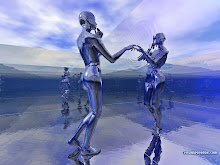Intel has grown through several distinct phases. At its founding, Intel was distinguished simply by its ability to make semiconductors, and its primary products were static random access memory (SRAM) chips. Intel's business grew during the 1970s as it expanded and improved its manufacturing processes and produced a wider range of products, still dominated by various memory devices.
While Intel created the first microprocessor (Intel 4004) in 1971 and one of the first microcomputers in 1972, by the early 1980s its business was dominated by dynamic random access memory chips.
However, increased competition from Japanese semiconductor manufacturers had, by 1983, dramatically reduced the profitability of this market, and the sudden success of the IBM personal computer convinced then-CEO Grove to shift the company's focus to microprocessors, and to change fundamental aspects of that business model.
By the end of the 1980s this decision had proven successful, and Intel embarked on a 10-year period of unprecedented growth as the primary (and most profitable) hardware supplier to the PC industry.
After 2000, growth in demand for high-end microprocessors slowed and competitors garnered significant market share, initially in low-end and mid-range processors but ultimately across the product range, and Intel's dominant position was reduced.
In the early 2000s then-CEO Craig Barrett attempted to diversify the company's business beyond semiconductors, but few of these activities were ultimately successful.
In 2005, CEO Paul Otellini reorganized the company to refocus its core processor and chipset business on platforms (enterprise, digital home, digital health, and mobility) which led to the hiring of over 20,000 new employees.
In September 2006 due to falling profits, the company announced a restructuring that resulted in layoffs of 10,500 employees or about 10 percent of its workforce by July 2006. Its research lab located at Cambridge University was closed at the end of 2006.


































